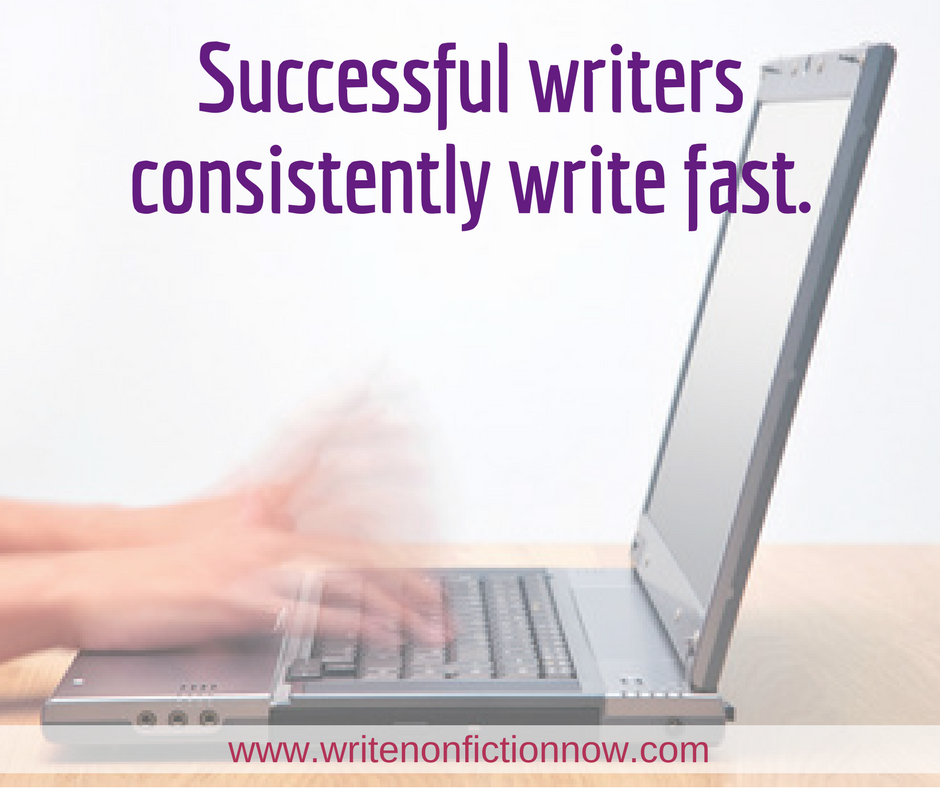So, you have chosen nonfiction writing as your trade. And you plan to make a living as a writer. You can…if you produce articles, essays, blog posts, or books quickly.
That means you need to learn to write fast. You cannot lose time staring at the blank page or ponder over every word.
Yet, many writers struggle to produce even one page of copy in an hour. They start out with good intentions, but their productivity often goes south. It takes hours to write a single paragraph. Staring at the blank page evokes self-doubt frustration and, eventually procrastination and fatigue.
I bet you understand. At those time, your fingers seem reluctant to type anything even remotely passable.
So you tell yourself you are suffering from the notorious writer’s block. That’s a nasty predicament and an extreme problem for a writer—especially a writer on deadline or who wants to write a book in a month, such as during the Write Nonfiction in November (WNFIN) Challenge.
But there’s another extreme: writing at a mind-blowing speed pretty much all the time, from dawn until dusk, brimming with great ideas and putting them on paper with ease.
However, there are many points between these two extremes. Most people don’t fall squarely in either of the two categories; rather, they are stuck somewhere in between, experiencing multiple ups and downs as they write. And, in most cases, it isn’t a big deal.
In most cases.
But if you’ve decided to make writing your bread and butter, relying on the whims of your mood is simply not an option. (The same is true if you decide to take on the challenge of writing a nonfiction book in a month.) You have to develop skills and habits that will ensure a constant output of quality writing.
And you know what?
Here’s just the thing you need: an infographic from Custom-Writing.org that offers 15 techniques to enhance your writing speed. It includes a variety of really useful techniques—including some high-performance ones mentioned on this blog previously, like moving your body and taking frequent breaks. After all, becoming a high-performance writer is not just about fingers flying across the keyboard.
Check out the infographic (below) for better writing results immediately— during the WNFIN Challenge.
Have you tried any of these strategies with success?
About the Author

Daisy Hartwell is a long-time member of the Custom-Writing staff. While completing her degree in linguistics, Daisy was looking for a part-time job as a writer, but, upon graduating from college, she decided to work full-time. Combining her knowledge of linguistics with her distinctive writing style, Daisy is an incredibly productive and diligent writer. A big admirer of National Geographic, Daisy is always on the road getting inspiration for her creative writing.
Photo courtesy of RTimages/stockfresh.com

